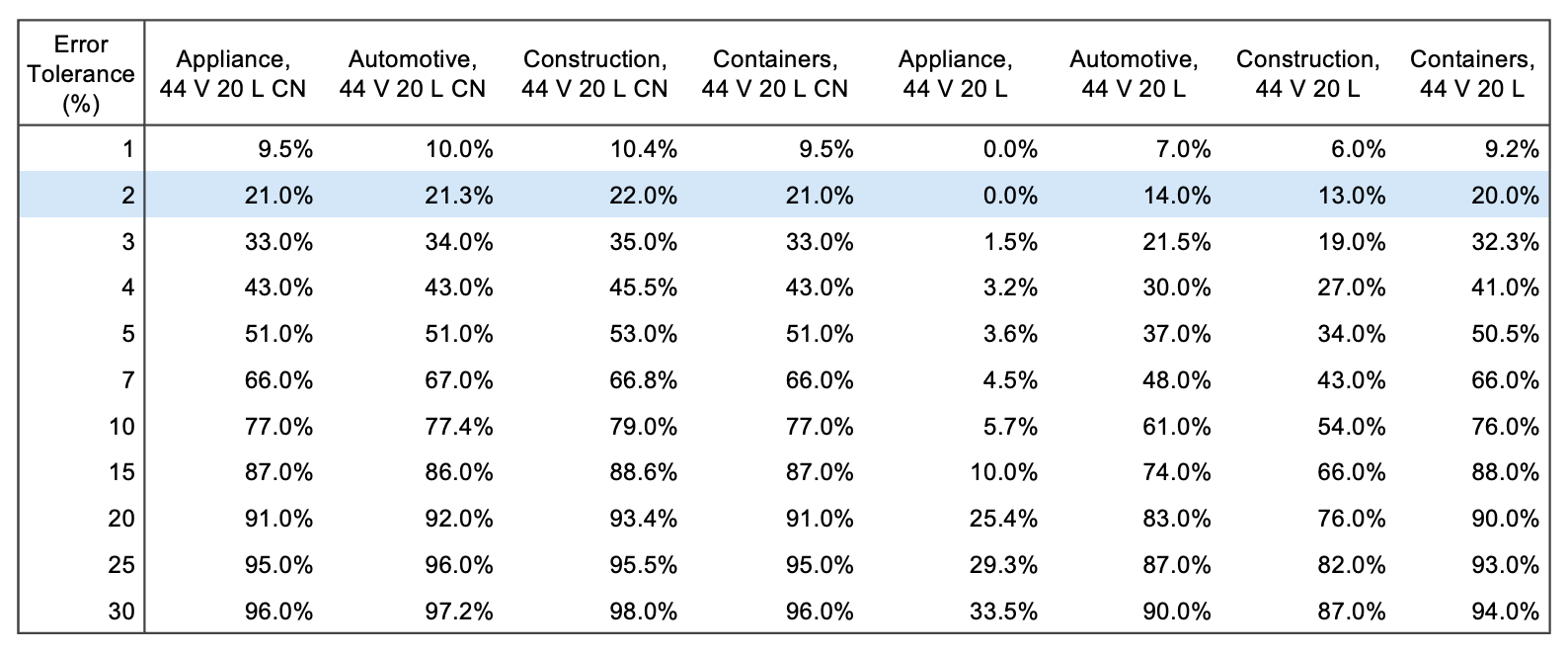AGP Support: Solution Engineering, Technology Sourcing
Industry: Chemicals, Technology & Software
Polycarbonate Demand Forecast Modeling
Client
The VP of marketing for the polycarbonate business of a chemical manufacturer believed that weak forecasting accuracy was leading to mis-allocation of volume and unnecessary price discounts.
Situation
A chemical manufacturer suffered from weak demand forecast accuracy. This limited the company’s ability to manage volume allocation across customers. It also led to unnecessary price discounts being offered to customers, which negatively impacts topline revenue and profitability. This is a chronic challenge in the industry since demand can fluctuate significantly from quarter to quarter due to market cycles in customer industries.
The client’s forecasting team was highly reliant on lagging indicators, such as price indices. They believed that a machine learning approach could provide insight into future trends by processing leading indicators that correlate with future demand conditions.
Approach
Asia Growth Partners used machine learning frameworks to build an algorithm with the goal of forecasting demand at 2-month, 3-month, and 12-month time horizons. This algorithm was not intended to replace the forecasting team. Instead, it would serve as a tool in their effort to shift from a qualitative to a quantitative demand forecasting approach. The end customer industries included construction, automotive, and consumer electronics.
The algorithm ingested over 1,400 external variables, including macroeconomic indicators, customer industry demand indicators (e.g., housing price indicators in major economies), dates that correlate with demand shifts (e.g., holidays, weather trends), and market data (e.g., energy cost futures). Additionally, over 100 internal variables were considered, ranging from price quotes to time taken to close specific steps of the sales process. Three years of historical data were available from most data sets for training. Random forest and time series models were found to be the most effective.
- Define target market segments, forecasting objectives, and accuracy targets.
- Identify data sets, ingest at least 24 months of data for each variable, and process/clean data.
- Train algorithms using 70% of historical data and test them using 30% of historical data.
- Evaluate algorithm accuracy under known conditions and resilience under new conditions.
- Modify business processes to integrate algorithm output into forecasting analysis.

